Nurturing Growth: Holistic Development Unveiled
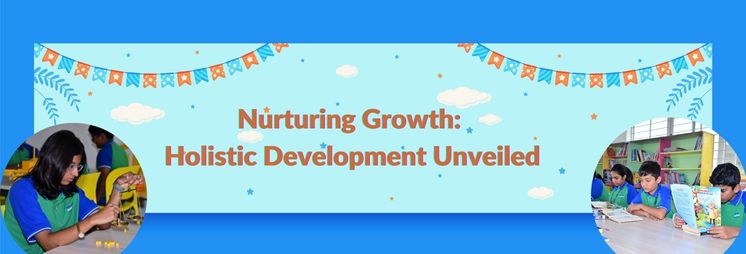
Holistic development within the education sector refers to the physiological, social, intellectual, as well as psychological development of a person. This approach puts emphasis on the fact that interconnected dimensions are necessary for full human flourishing. As such, students are far from being mere repositories of knowledge, but complex beings characterized by diverse needs. This can be achieved through creating an environment that nurtures all aspects of their development. Teachers, for holistic growth, should use a more 360-degree approach in reaching student growth in every way. This means that there is harmony between school learning and social-emotional learning, body care, and creative expression. For instance, a curriculum that encompasses study in math and literacy is comprised of activities for growing emotional intelligence, providing a balance toward student success in academics as well as other personal lives. In addition, holistic development emphasizes the participation of teachers, parents, and the community in cooperation. Each of them can work together in establishing a favorable environment that supports students’ total growth. Cooperation between teachers and parents concerning any progress about the performances of students in various areas fosters teamwork in learning. Involvement of the community can also add life to learning experiences by providing opportunities for service learning and meaningful application of their skills in real life scenarios. Holistic schools thus offer experiential learning opportunities where students are exposed to real-life challenges as a way of developing their critical thinking skills. The individual is thus encouraged to apply knowledge in solving problems by being innovative and interactive, linking their academic life with everyday activities in real life through project-based learning. Holistic development should be encouraged for students to prepare them adequately in a complex and changing world. This can be done by attending to the diverse needs of learners and incorporating a wide range of aspects of development into education so that they become a vehicle for empowering students to reach their great potential. Holistic education to be followed will enhance academic outcomes but also enable balanced individuals with resilience, empathy, and confidence to face life’s challenges when practice takes over from theory in the future.
Empathy in Early Childhood Education
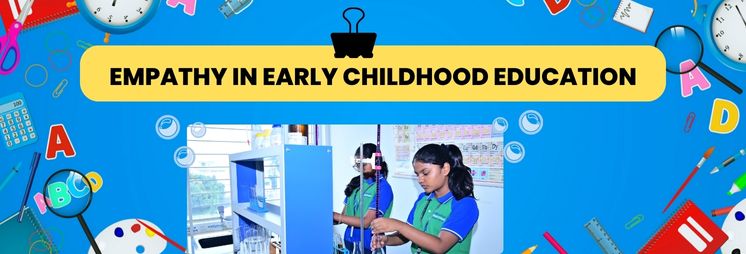
Empathy, then, is quite important in early childhood that will lay the foundation for social-emotional development. At this age, the children are coming to see their feelings and the feelings of others, which is why the teachers need to encourage empathetic behavior in them. Research findings indicate that children who develop empathy by this age exhibit higher levels of emotional intelligence and even more developed skills in social life as they grow up (Raver, 2002). These empathetic children are more likely to act in prosocial ways, to share, and to cooperate of which play an essential part in building up good relationships.. One effective technique for teaching empathy to young children is storytelling. This method allows children to immerse themselves in the perspectives of various characters, enhancing their understanding of different emotional experiences. By discussing the feelings and motivations of the characters, educators enable children to step into others’ shoes, fostering emotional awareness alongside comprehension. For instance, when children listen to a story about friendship, they can explore how the characters might feel in moments of joy, sadness, or conflict. This practice not only enriches their vocabulary and comprehension skills but also nurtures their ability to empathize with others. Role-playing activities can also be used as a means to put empathy skills into practice. By assuming the perspectives of the group, children get to experience various emotional realities (Hoffman, 2000). For example, role-playing scenarios where one child is left out can help others understand the emotional state involved, allowing for empathy and understanding between the kids. Creating a classroom environment that encourages emotional expression is vital for nurturing empathy. Educators can model empathetic behavior by validating children’s feelings and demonstrating how to express emotions appropriately. This nurturing atmosphere fosters a sense of community and support among peers, allowing children to share their experiences and feelings freely.
Holistic Development in Education
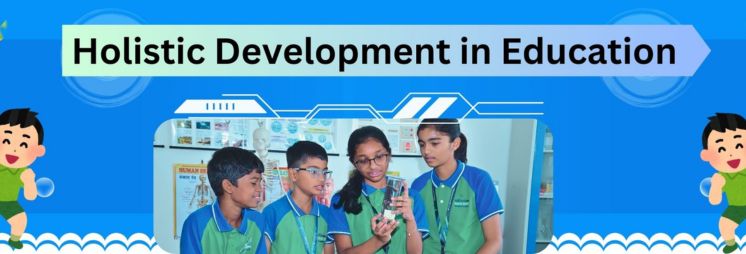
Holistic development in education refers to the overall approach that not only develops the intellectual and emotional aspects of students but also their social, physical, and creative elements. Such an educational approach is fundamentally holistic, unlike traditional school systems which regard academic achievement. In a holistic education framework, it is taken for granted that the students’ emotional and social well-being get equal significance along with their intellectual success. This again forms the basis of the fact that emotional intelligence, in large measure, contributes to a student’s capacity to learn and flourish in an educational environment. Holistic development refers to teaching and incorporating students in the learning of life skills like self-regulation, empathy, collaboration, and critical thinking to foster resilience and adaptability in an increasingly dynamic world. Holistic education also emphasizes physical well-being and artistic expression. Holistic education, as discussed earlier, emphasizes the importance of physical education as well as active extracurricular activities like sports, music, and fine arts. Such extracurricular activities not only enhance students’ bodily fitness but also mental health and contribute to their self-expression, creativity, and ability to work in a team. The arts are an opportunity for self-expression and communication of deeply felt emotions and feelings by a person. Ensuring students had all the skills to succeed both at school and beyond, holistic development balanced the approach towards education. Properly structured education helps make students sound intellectual and socially active individuals without making them psychologically vulnerable. This is essential to ensure that she or he becomes an active citizen who contributes positively to society. To teach within the holistic approach is to be more than just a provider of information. A facilitator provides leeway for support and inclusion and allows the student to feel secure in their ability to express themselves and to explore their interests. Thus, holistic education presents the possibility that educators can foster a nurturing environment that acknowledges and appreciates unique strengths and challenges for each learner. Finally, holistic development in the schools will prepare the child to do not only well academically but also understand the ins and outs of life. Our future generations will, in essence, be provided with all that is required to lead balanced, fulfilling lives.
From Theory to Practice: Implementing Holistic Development
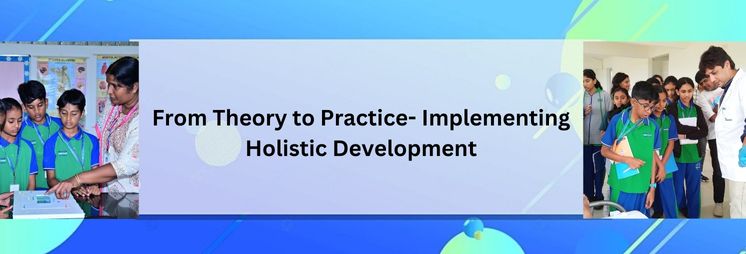
The integration of holistic development in education hence means much more substantial changes in the actual practice of teaching as well as in curriculum planning. In fact, this approach forces educators to move out from the fray of teacher-centered approaches such as lectures and courses, standing room for experiential learning, SEL, and innovative pursuits. Project-based learning is an effective methodology for holistic development. This pedagogy involves real problems where students work in groups and solve problems in practical settings. An efficient strategy through hands-on projects allows the student to think critically and apply knowledge towards problem-solving skills needed for the complexities of today. For example, a community service project dealing with regional issues would also entail academic and social awareness. Another very essential component in the implementation of holistic development is social-emotional learning. The SEL programs equipped students with the resources to manage themselves, develop empathy, and show positive relationships with peers. The addition of SEL to the curriculum encourages reflection about feelings and behaviors in a responsive classroom where each student feels valued and important. Techniques like mindfulness practices, group work, or organized discussions may even be integrated within the daily lessons to promote emotional awareness and social skills. Besides, holistic development can be better enhanced through the incorporation of arts and physical education in the curriculum. Through creative expression in forms of music, drama, or even visual arts, one finds a way to express himself and, therefore grows in persona. This is augmented even further by physical activities encouraging teamwork and discipline; two aspects which constitute fundamental in holistic education. This is where teachers play an extremely important role, and this is something that needs to continuously be developed and supported. Only through such training will the educators learn experiential and socially driven teaching methods that they would use to enhance practice for the diverse needs of students. Transitioning from theory into practice within holistic education requires the use of innovative teaching methodologies and puts emphasis on social-emotional learning. It is one such teaching approach that ensures the dynamic learning environment that helps to develop every dimension of a child. With such an approach, the students are more likely to be better performers in all walks of life. This holistic education approach not only prepares the students academically but also sets the grounds for teaching emotional intelligence, and social responsibility skills are important tools necessary for the modern world.
Engaging Activities for Parenting Workshops

Interactive Parenting Workshop Parenting workshops are an ideal time for parents to enhance their skills, increase their knowledge, and acquire strategies for raising well-rounded children. In this fast-paced world, it is crucial to engage the participation of parents so that they can attain real-life insight while staying involved. Key Activities to Keep in Mind 1. Role-Playing Scenarios: Parents tackle the usual challenges of parenting in role-playing and can tackle a tantrum or setting boundaries. It is through these scenarios that parents will develop most of their conflict resolution and empathy skills. 2. Empathy Building Exercises: Empathy is so vital to parenting and early childhood education; there are activities such as “walk in their shoes,” which see what’s going on in the child’s world from their perspective in hopes of being better empathetic and patient. 3. Interactive Discussions: The role of empathy in education and importance in early childhood education is sure to get group discussions where parents will use their own experiences and understand other people’s opinions. 4. Workshop on Emotional Intelligence: Emotional intelligence is teachable when one includes topics such as teaching a child emotional intelligence can be part of the positive parenting workshop. Children learn to manage their emotions as their parents practice these skills in artificial conditions. 5. Collaborative Problem Solving: Activities are designed to take a team of parents through solving hypothetical problems in parenting. These are high engagement activities that focus on teamwork and empathy in education. Apart from learning, parenting workshops help create a collaborative, emotionally intelligent, and empathetic learning environment between parents.
Empathy, Economics, and Excellence: Nurturing Future-Ready Students at Millennium World School
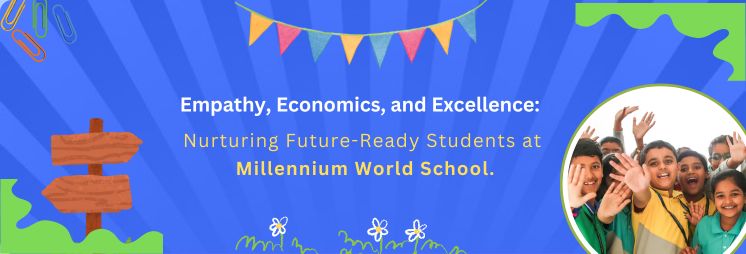
Designing a curriculum for ages 11 to 15 around empathy, economics, and excellence is crucial because it aligns with the developmental needs and challenges that students face at this stage. Here’s why these pillars are vital: 1. Empathy: • Emotional and Social Development: Students in this age group are experiencing significant emotional changes, seeking identity, and beginning to understand their role in society. Empathy helps them develop social awareness, emotional intelligence, and strong interpersonal relationships. • Collaboration and Conflict Resolution: As they engage more in group work and peer interactions, teaching empathy fosters better collaboration, tolerance, and the ability to resolve conflicts constructively, crucial for both personal and professional success later in life. • Global Awareness: With access to global information through technology, an empathetic curriculum helps students understand diverse perspectives, promoting inclusivity and preparing them to be global citizens in an interconnected world. 2. Economics: • Practical Life Skills: Introducing the basics of economics helps students understand money management, budgeting, and the value of resources. This age is ideal to start cultivating financial literacy, preparing them for real-world challenges. • Entrepreneurial Thinking: By teaching economic principles, students learn about innovation, entrepreneurship, and problem-solving, helping them become independent thinkers capable of addressing societal needs. • Awareness of Systems: Understanding economics fosters awareness of how societies function, from local economies to global markets, helping students make informed decisions about their roles in the economy. 3. Excellence: • Academic Rigor: Excellence emphasizes striving for high academic standards, encouraging students to push their boundaries in both knowledge and skills. This approach builds resilience and a growth mindset, preparing them for future educational and career success. • Holistic Development: Excellence isn’t limited to academics; it also includes fostering creativity, critical thinking, and problem-solving abilities, ensuring well-rounded development. • Ethical Leadership: By focusing on excellence, students learn the importance of integrity and ethics in all aspects of life, fostering a sense of responsibility to contribute positively to society. Why This Triad is Essential at 11 to 15 Years: • Critical Development Stage: This age marks the transition from childhood to adolescence, where students are forming their worldview and personal identity. A curriculum grounded in empathy, economics, and excellence equips them with emotional maturity, financial literacy, and the drive to pursue their passions with purpose. • Preparation for Real Life: These three elements help students become compassionate individuals, economically aware citizens, and driven professionals, laying the foundation for both personal fulfillment and societal contribution. This approach fosters not just academic success but also emotional and social well-being, preparing students to navigate complex global challenges with wisdom and integrity.
Collaborative Efforts in Parent and Teacher Partnership
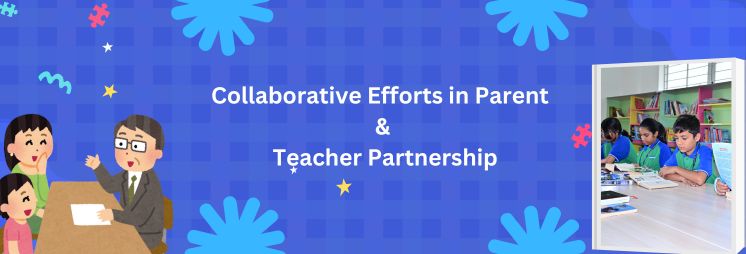
The Parent-teacher partnership is a collaborative effort. Most important relationship in a child’s academic success is perhaps the one between parents and teachers. A consistent partnership between parents and teachers within the setting ensures support delivered to children is consistent at home and in the class, thus offering a smooth span of education which is nourishing to the development both academically and emotionally. Why is this a great partnership? First, it promotes mutual support. When parents and teachers share insights regarding the progress, challenges, and strengths of a child, the parents may join with the teacher to devise a common approach. Such collaboration is specifically needed in areas such as managing behavior and encouraging academics. For example, when a child appears to be challenged by social skills, teachers can collaborate with parents to reinforce strategies at school and at home. Communication is the very bedrock of this partnership. Periodic updates through parent-teacher meetings, calls, or online platforms can keep the two parties in sync. It helps to address problems before they become bigger issues and indicates a proactive attitude toward a child’s learning. Parent-teacher partnership workshops are very helpful. The discussions, for instance, on the role that empathy plays in education, especially to children, prove to be most crucial to a supporting learning environment. Thus, the workshop serves to play an important role in teaching parents and teachers how to promote empathy, collaboration, and emotional intelligence among children. Conclusion If parents and teachers cooperate, then the child will surely blossom. This collaborative effort fosters not only academics but emotional development as well, thus striving for a more holistic approach to education for both the child and his school community.
How Collaborative Learning Transforms the Classroom Dynamic
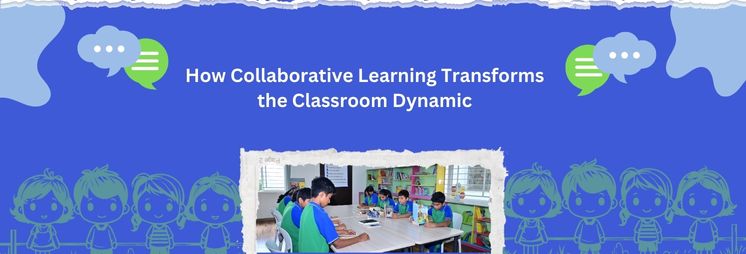
I believe that there are good reasons why cooperative learning has become a strategy in most modern classrooms. The cooperative approach to education-the point at which students cooperate to solve problems and finish tasks-affects the development of some of the most important life skills, such as teamwork, communication, and empathy. One major transformation that is visible is a shift in social dynamics. In collaborative learning, the students have to interact with one another, and such isolated nature that comes with lecture-based methods is disintegrated. As students learn in a collaborative environment, diversity is cherished, an experience that naturally leads to empathy. It is very effective for early childhood education, where social interaction leads to emotional development as well. The academic benefits are equally impressive. Peer education creates a peer-to-peer learning process where students explain concepts to other students. This helps strengthen the memory and retention and comprehension are better because students have to clearly put down what they understand and not be afraid to respond to what is given. Besides that, collaborative learning encourages critical thinking. For example, the students have to critically think through various approaches, negotiate their roles, and combine their knowledge to solve an assigned problem. Exploration through such group work encourages deeper cognitive engagement than one may often find with individually learned activities. It transforms classrooms into dynamic community settings in which students learn not only academic knowledge but also the many necessary interpersonal skills: empathy, cooperation, and critical thinking. This means that learning will be holistic preparation for students for both academic excellence and life beyond school.
Strategies for Effective Classroom Learning
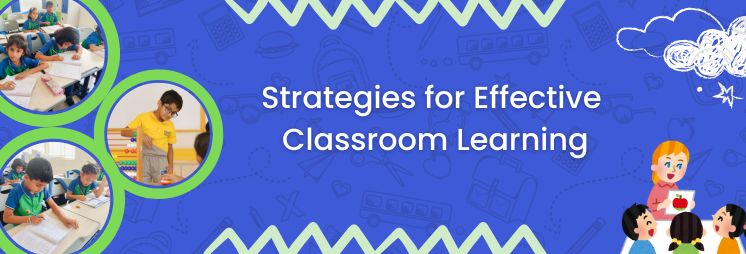
Effective classroom learning engages students actively to cater for different styles of learning. This learning is essentially done in an extremely collaborative environment. Modern classrooms are no longer the traditional teacher-centred approach but a new strategy, where the student has been positioned at the heart of the process of learning. Another approach is Interactive Learning. Such activities as group discussions, peer reviews, or project-based learning may improve the level of student engagement significantly. The need in such an activity is that students have to work together to achieve the goal, hence enhance communication and teamwork. In the process of working together, it helps the children to learn deeper about the material and establishes empathy because they recognize and care for different viewpoints. One good method to do this is the direct inclusion of empathy in the curriculum. Such a step proves to be quite useful, especially at the early childhood education level, when children are still learning their social skills. For example, the aspects of perspective-taking may involve storytelling, so that they learn to understand the feelings and experiences of others. Real-World Problem Solving is another effective strategy. Challenging them to come up with advanced solutions to real-life problems makes the students apply their knowledge in a creative way, which is both collaborative and effective. Example The students can engage in teamwork to come up with solutions on how to solve environmental issues, hence effectively utilizing what they learn. Lastly, technology integration improves collaboration in the classroom. For example, online discussion boards or collaborative, web-based document editing allows working outside of class time and cements those learned. Effective learning strategies have transcended beyond mere content delivery. Everything from collaboration to thinking and empathy is also developed in dynamic learning environments that empower students with academic and life skills.
Techniques for Implementing Collaborative Learning

Collaborative learning in the classroom changes everything. Students interact with the material in a new way, delivering both academic and life-skills results. So what does this look like for the teacher? One of the most simple and effective tools is small group work. Breaking them up into different groups on charge of working on a project or solving a problem lets teachers create a space in which peer interaction flourishes. This type of collaboration helps develop empathy as they have to listen to and absorb their peers’ ideas. Role playing is another powerful activity where the role of the teacher is assumed by the learner. Here, the students are encouraged to explain things learned between and with other students as the method itself encourages a deeper understanding as well as greater responsibility for the learning of their peers. Also, they can utilize technology to facilitate teamwork. For instance, online tools such as Google Classroom or other collaborative digital resources allow students to collaborate on projects over the computer regardless of their geographical locations. Additionally, the students can share and get feedback using these collaborative digital tools. Another way to facilitate collaboration is through peer assessment. How, as students assess their peers’ work, they are called upon to learn how to give constructive criticism and respond to it, an activity that combines not only empathy but reflection. Collaborative learning techniques will change the face of the classroom as a place where the students learn and work in teams, learn from one another, and develop much-needed skills about empathy, teamwork, and critical thinking as they try to get answers to solutions. Teachers will have been trained in ways that always enable them to create vibrant, challenging learning environments


